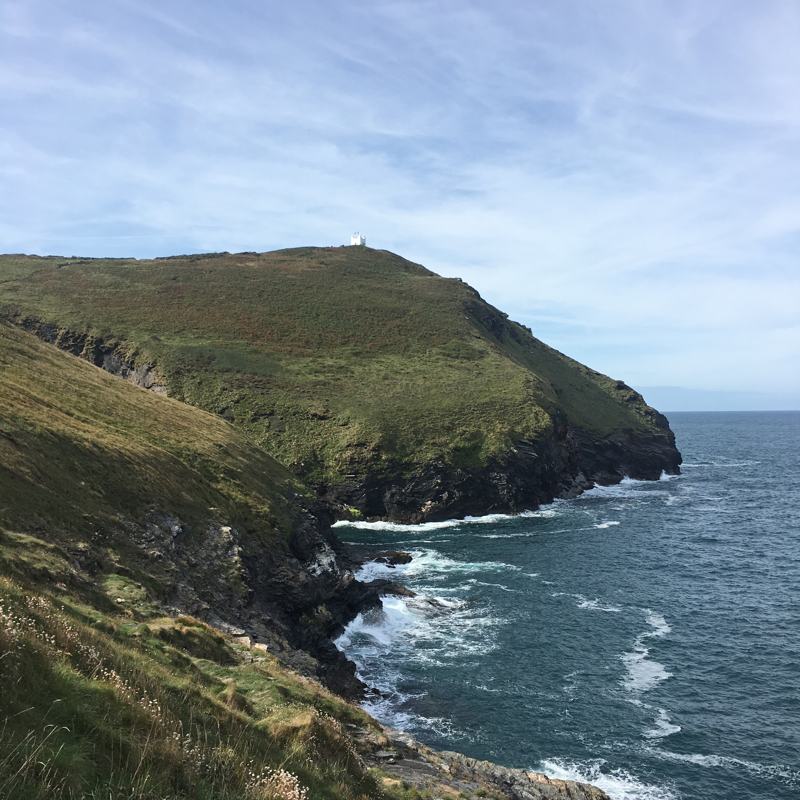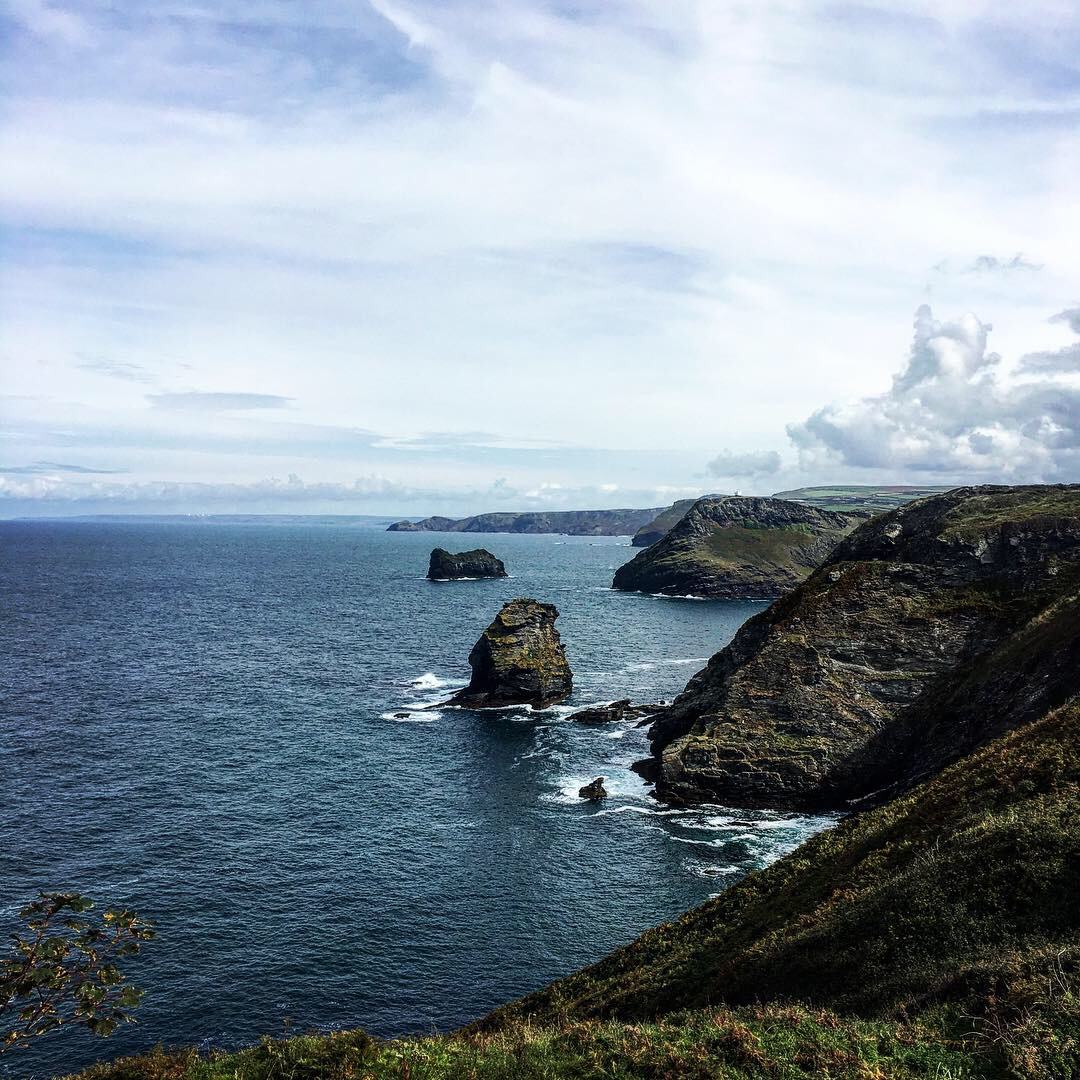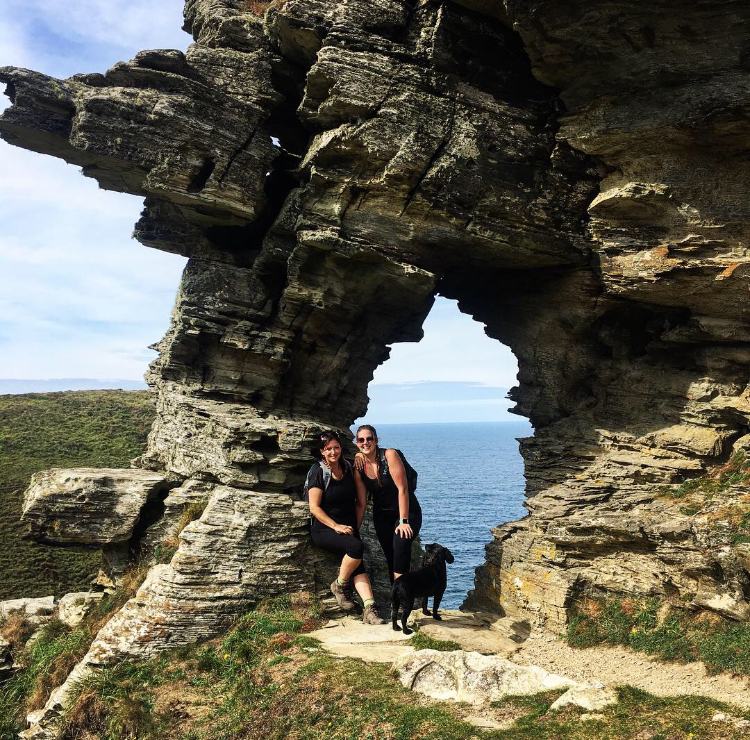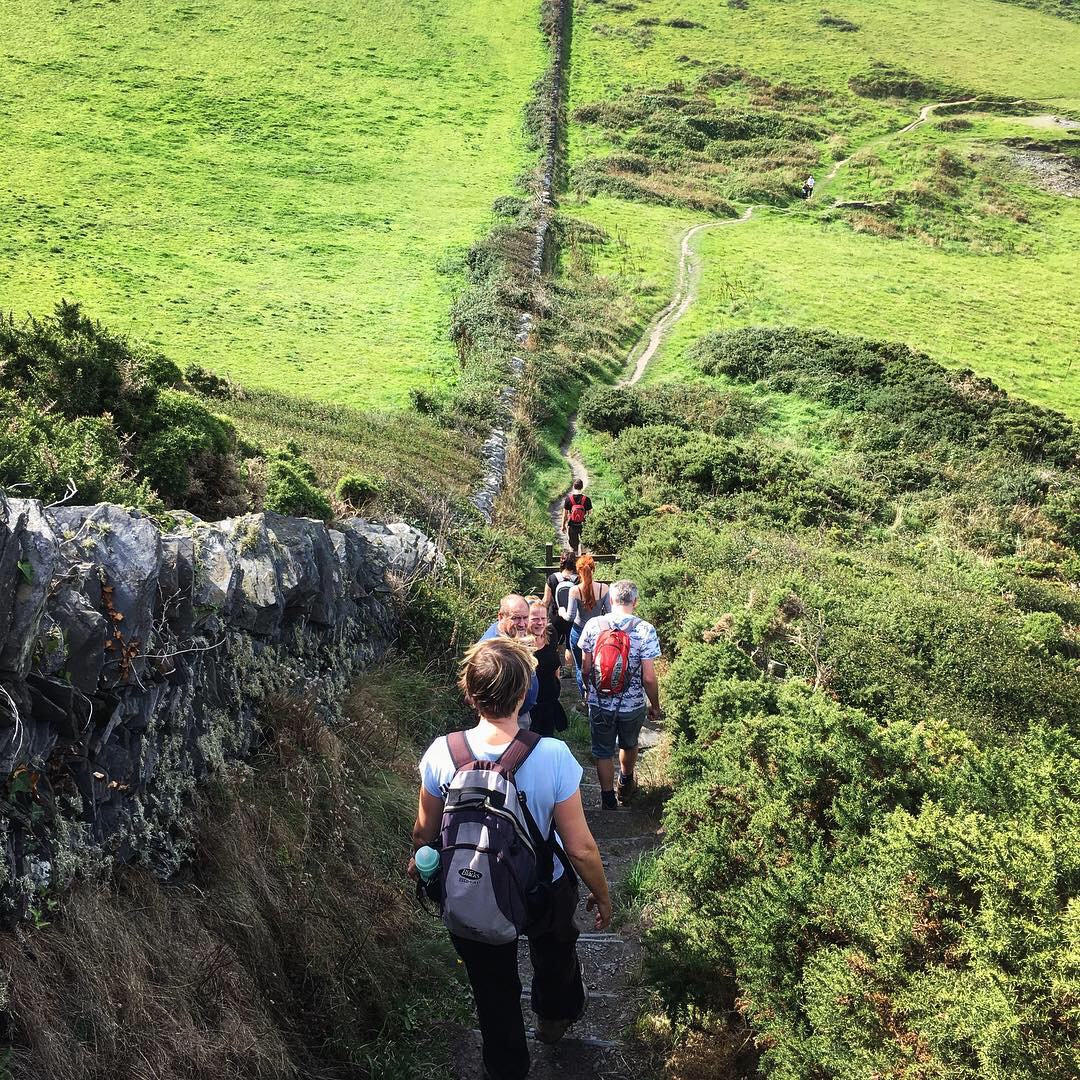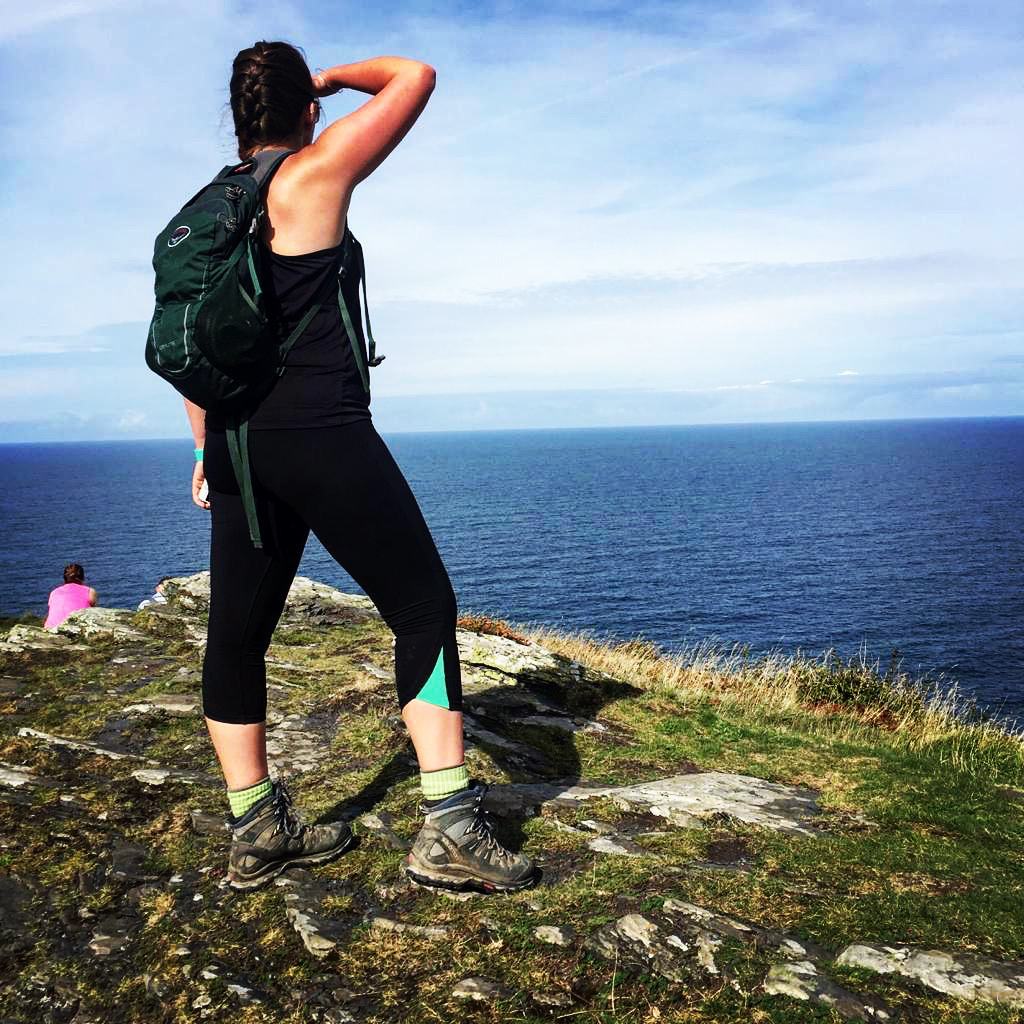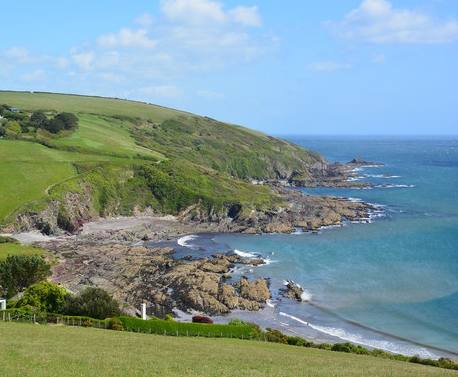Have you ever visited a place that makes you feel you’re no longer in your homeland, but somewhere completely different? That although you’ve only gone a few miles from your doorstep, it feels as if you’re the other side of the world? I had that feeling only recently when I took my walking group, Cornish Ramblings, to Boscastle for a 6.5 mile walk. Nestled between luscious valleys, Boscastle is only 40ish miles from where I live, but I’d never touched a toe there before. Shocker, I know! But for some reason, this beautiful village had escaped my walking grasp. But at 32 years of age, FINALLY, I became privy to all its wonder…and fell a little bit in love.
On arriving into Boscastle, you are instantly transported into a scene much like a picturesque fairy tale. With its quaint buildings, surrounding billowing coastlines, deep coombs and romantic natural harbour, it’s hard to not be in awe at this beautiful Cornish village. With Boscastle relying on approximately 90% of its trade dependent through tourism, I was glad to see it bustling with visitors. The pubs and restaurants were full of chatter, clattering cutlery and clinking glasses, whilst the shops had plenty of curious eyes flirting in wander at what was on offer. The streets were awash with hikers, us included, ready to set off on whatever adventure lay in wait.
Making our way past the visitor’s centre, we started our walk by following a pathway alongside the river that lead us towards Willapark. With excellent views over Boscastle Harbour, the beginning of our hike was already looking promising. As we reached the top, the coastguard lookout emerged in front of us as we stopped here to catch our breath and take in the magnificent views.
This spectacular stretch of coastline is a notorious spot for shipwrecks. According to the notes on the iWalk Cornwall app, in January 1843, the Jessie Logan had been making its way from Calcutta to Liverpool. A heavy gale drove it to shore where it struck on the rocks near Blackapit. All the crew perished and most of her cargo came ashore, including rice, sugar and cotton. Further along this route, debris from the wrecked ship, Alliance, was also washed up. In 1884, the steam-powered cargo freighter disappeared whilst on route from Cardiff to St. Nazaire. The Alliance had been carrying coal from the Welsh valleys, which had been liable to produce methane in wet conditions and known to cause ships to spontaneously explode. However, an investigation found the shipwreck to be well ventilated and in a good seaworthy condition!
Heart rates back to normal, we carried on. After making our way down, across and up a couple of valleys, through a few kissing gates and along a path towards a rock arch known as the Lady’s Window, we reached the deep and gorgeous gorge at Rocky Valley. But hang on I hear you cry. You want to hear more about the Lady’s Window? Well okay then! This beautiful hole in a rock was formed around 370 million years ago when Cornwall was pushed out to sea. Through intense pressure, the heat from colliding rocks and gradual weathering, the Lady’s Window emerged…and now makes for a great photo shoot setting for Cornish Ramblers like us!
After several (hundred) photos and selfies later, we made our way along the coastline and eventually down into Rocky Valley. This beautiful gorge made my jaw drop to the ground. Having been mentioned in travel books as a place of exceptional beauty, as I did a 360 turn, I could see why. Rocky Valley has been formed by the Trevillet river carving its way through the slate bedrock, and cascades through woodland before opening out into a canyon which meets the coast. This valley is dramatic yet peaceful to walk through, and I could feel my fellow hikers taking it all in around me, breath by breath.
Click to zoom …
Crossing the bridge and following the pathway alongside the river, we reached worn away buildings, just waiting to be explored. Strange labyrinthine stone carvings had been chiselled into the rockface, but the age of these carvings is still unknown. Some historians believe they date back to as early as the bronze age, whereas some believe they are a lot more recent. Either way, this particularly creepy, yet beautiful area, caused a lot of Blair Witch talk and re-enactments which left me feeling a little giddy to say the least!
Click to zoom …
As we made our way towards Trevillet Mill, we eventually popped out onto the main road and headed up a long hill towards Trethevy. Passing a sign for St. Nectan’s Glen, I made a mental note to add this area to the long list of walks I wanted to take Cornish Ramblings next. St. Nectan’s Glen, or Glynn Nathan in Cornish, is an area of woodland near Tintagel and stretches a mile around both banks of the Trevillet River. Its most famous feature is St. Nectan’s Kieve – a 60ft waterfall through a hole in the rocks…I’m sensing a theme with holes in rocks here! Many tourists come from far and wide to see this spectacular waterfall, claiming it be one of the UK’s most spiritual sites.
Heading out of Trevalga village, the next part of this circular walk took us further inland across fields…and over approximately 7 stiles! At one point I thought we were hurdling, the stiles seemed never-ending. But alas, as usual, they caused us endless amusement as we hoicked ourselves up and over, again and again.
The final leg of this glorious hike would take us back into the village of Boscastle with, if you choose to, a diversion via Bottreaux Castle, a 12th century fortress of the de Botterells, which included extensive dungeons. Very little remains of this castle as over the centuries, residents of Boscastle ‘reused’ the stones to build their own houses. But the view across the harbour is well worth the diversion. River Jordon flows at the floor of the valley and joins the River Valency, which collects water from another steep-sided valley, doubling the floodwaters that descend on Boscastle in heavy rain. Back in 2004 (16 August to be precise), a flash flood caused extensive damage to the village, leaving residents trapped in houses and turning the roads into rivers. The village centre was washed away and a total of 91 people were rescued with, thankfully, ‘no fatalities just a broken thumb’ according to BBC News.
As we settled back into the hustle and bustle of Boscastle, I was thankful to see that the 2004 devastation seemed nothing but a distant, but certainly not forgotten, memory. As we ended our walk, we slowly said our cheery goodbyes. Some disappeared into a café for a well-deserved cuppa and slice of cake, whilst others decided upon a browse in the shops. I decided, as I watched everyone go on their merry way, that this little pocket of walking paradise, was definitely a place worth revisiting soon.
“Blessed are they who see the beautiful things in humble places where other people see nothing”
– Camille Pissarro

